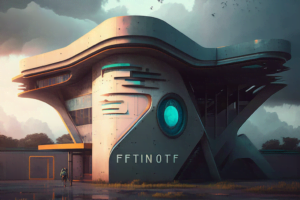The vision of a decentralized internet has gained significant traction in recent years, driven by the growing concerns over privacy, data security, and censorship in the traditional internet infrastructure. Decentralized storage solutions such as the InterPlanetary File System (IPFS) and Filecoin are at the forefront of this movement, providing the foundation for a more resilient and open web. In this article, we’ll dive into the role of these distributed storage technologies in building a decentralized internet and explore other prominent solutions shaping the future of the web.
The Limitations of the Centralized Web
The current internet relies on a centralized architecture, with data stored on servers owned and controlled by large corporations and internet service providers (ISPs). This centralization poses several challenges, including:
- Data Vulnerability: Centralized servers are susceptible to hacks, data breaches, and server outages, putting users’ data at risk.
- Censorship and Surveillance: Centralized control enables governments and other entities to monitor, censor, and manipulate online content, undermining privacy and free speech.
- Inefficient Data Distribution: The current system’s reliance on centralized servers can lead to slow load times, especially for users in remote areas or experiencing high traffic volumes.
The Emergence of IPFS
The InterPlanetary File System (IPFS) is a peer-to-peer (P2P) protocol designed to address these limitations. IPFS enables users to store, retrieve, and share data in a distributed manner, removing the need for centralized servers. Key features of IPFS include:
- Content Addressing: Instead of relying on server locations (URLs), IPFS uses content-addressed storage (CAS), assigning unique cryptographic hashes to each file. This ensures that users can access the content regardless of its physical location.
- Decentralized Storage: IPFS allows users to share and store files across a distributed network of nodes. This reduces the risks associated with centralized storage and improves data resilience.
- Caching and Content Distribution: IPFS caches frequently accessed content on nearby nodes, optimizing content distribution and reducing latency.
Filecoin: The Incentive Layer for IPFS
While IPFS provides a robust framework for decentralized storage, it lacks a built-in economic incentive for users to contribute their storage resources. Filecoin, a decentralized storage network built on top of IPFS, addresses this by introducing a marketplace where users can buy and sell storage space using the native Filecoin (FIL) cryptocurrency. Filecoin offers the following benefits:
- Incentivizing Participation: Filecoin rewards users for sharing their storage resources, creating a sustainable ecosystem for decentralized storage.
- Storage Contracts: Filecoin enables users to enter into storage agreements called “deals” that outline the terms of data storage, retrieval, and payment.
- Data Redundancy and Security: Filecoin ensures data is stored redundantly across multiple nodes, increasing reliability and reducing the risk of data loss.
Other Distributed Storage Solutions
In addition to IPFS and Filecoin, several other projects are working on decentralized storage solutions, such as:
- Storj: A decentralized cloud storage platform that leverages blockchain technology to encrypt and distribute user data across a network of nodes.
- Sia: A decentralized storage platform that uses smart contracts to enable users to rent out their spare storage space to others, paid in the native Siacoin (SC) cryptocurrency.
- Arweave: A decentralized data storage network that uses a novel “blockweave” structure to provide permanent, low-cost storage solutions.
Conclusion
Decentralized storage technologies like IPFS, Filecoin, and other distributed solutions are playing a crucial role in building a more secure, private, and resilient internet infrastructure. These innovative systems address the limitations of centralized web architectures by promoting data redundancy, incentivizing participation, and protecting user privacy. As the adoption of decentralized technologies continues to grow, the vision of a truly decentralized internet is gradually becoming a reality, paving the way for a more equitable and open web ecosystem.










![StarsArena (StarShares): The Universe of Web3 Crypto Social Media! [Guide] starsarena](https://cryptos.us/wp-content/uploads/2023/10/starsarena-300x200.png)












![StarsArena (StarShares): The Universe of Web3 Crypto Social Media! [Guide] starsarena](https://cryptos.us/wp-content/uploads/2023/10/starsarena.png)

